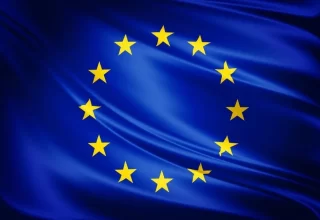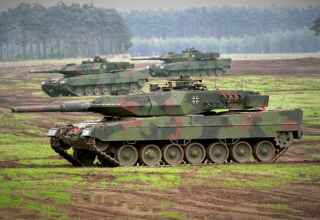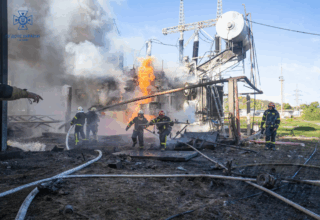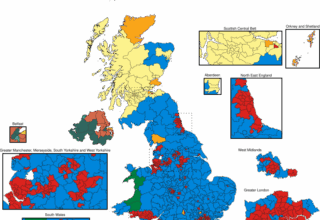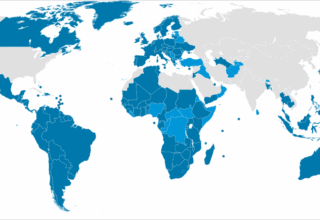
Tensions between China and Taiwan have been steadily mounting already from last year, when the leader of the Democratic Progressive Party (DPP), Tsai Ing-wen, with pro-independence views, was reelected for a second term in the presidency of Taiwan. Since then, Chinese officials have been constantly warning that any move towards independence would be a cause of war and continue to launch military exercises near the neighboring island (Brant, 2021). Thus, as tensions rise, the United States and the international community should be ready to deescalate a looming conflict that would jeopardize regional and global peace.
From the Mainland to the Island
For centuries the island of Taiwan was populated by the Austronesian tribal people. From 1683, the island passed to the authority of the Qing dynasty and thousands of people started to arrive from the Chinese mainland, deepening the connection between the two regions. The situation remained stable until 1895 when Japan won the First Sino-Japanese War, and the Qing government had to cede Taiwan to Japan. Japan rule lasted until the end of the Second World War when Japan surrendered and relinquished control of territory it had taken from China. Then, the Republic of China – one of the victors in the war – began ruling Taiwan with the consent of its allies, the US and UK (BBC, 2021). However, due to the Chinese civil war that had already began from 1927 between the Communists under Mao Che Tung and the Nationalists under Chiang Kai-Shek, two entities were created in 1949 when the Communists prevailed and established the People’s Republic of China (PRC) in the mainland and the Nationalists who fled to Taiwan founded the Republic of China (ROC) (Mastro, 2021). The two entities claim since then that they are the legitimate government of the Chinese state and the PRC considers the ROC as a de facto region of the country. Nevertheless, some years after the creation of the ROC, in 1954, the US agreed to a mutual defense treaty that committed Washington to the ROC’s defence. Hence, the United States stationed forces on the island, including nuclear weapons, at various points in support of this commitment, which was abrogated in 1979 in deference to the normalization of diplomatic relations between the United States and the People’s Republic of China (PRC). In the treaty’s place, Congress passed the Taiwan Relations Act (TRA) which requires the United States to equip Taiwan with the means to defend itself and to “maintain the capacity” to resist efforts aimed at infringing on Taiwanese security and freedom (Sweeney, 2021). Therefore, the Taiwan issue remained on a stalemate, throughout the Cold War. During the 1990s however relations between China and Taiwan started improving and Beijing proposed a plan, known as “one country, two systems”, similar to the status of Hong Kong, under which Taiwan would be given significant autonomy if it accepted Chinese reunification (BBC, 2021). Taiwan rejected the offer and in 1992 the two adversaries signed a consensus declaring that there is only one China and that Taipei and Beijing agree to disagree on which government is its legitimate representative (Huang, 2017). The situation escalated in the beginning of the new millennia when in 2000, Taiwan elected Chen Shui-bian as president who was a strong supporter of the Taiwanese “independence”. His election alarmed China which some years later, on May 17th of 2004 issued a statement via the Taiwan Affairs office of the State Council of the PRC, declaring for the first time that Beijing would prevent Taiwan’s de jure independence under any cost. One year later, this policy was formalized by the Anti-Secessionist law that made clear that any declaration of independence could constitute an act of war (Huang, 2017). Bilateral relations were ameliorated after 2008 when Chen was replaced by Ma Ying-jeou, the leader of the Kuomintang Party, who sought to improve relations with China through economic agreements (BBC, 2021). Indeed, the same year the two governments agreed on progressing the “three links” that commenced direct flights, shipping and postal service. Moreover in 2010, the Economic Cooperation Framework Agreement (ECFA) was established and bilateral economic relations were augmented remarkably (Huang, 2017).
The Xi Era
After Xi Jinping became the President of the PRC in 2012, cross-Strait relations remained stable in the first years of his presidency. Nevertheless he continued the policies of his predecessor Hu Jintao that sought to isolate Taipei internationally, offering economic incentives to the island’s allies if they agreed to abandon Taipei for Beijing (Mastro, 2021). As Mastro (2021) also notes: “China also used its growing economic leverage to weaken Taipei’s position in international organizations and to ensure that countries, corporations, universities, and individuals—everyone, everywhere, really—adhered to its understanding of the “one China” policy”. The plan worked and today only 15 states officially recognize the ROC. In fact for Xi wants the reunification to be part of his personal legacy and made clear his ambition to resolve the issue by peaceful or even coercive means (Mastro, 2021).
Towards a Forced Unification?
The reelection of the pro-independence Tsai Ing-wen in January 2020 sparked fears to the Chinese policy-makers that Taiwan would never willingly and peacefully accept unification. However, the Taiwanese distrust augmented significantly after June 2020 when China exerted sweeping new powers over Hong Kong through a new national security law. Thus the region’s model of “one country, two systems” which could be duplicated in Taiwan was considered thereafter as a dangerous prospect (Mastro, 2021). Since then, China has accelerated its military operations and conducted 380 incursions into the island’s air defense identification zone in 2020 alone. In addition, last April, Beijing sent 25 fighters and bombers to the area (Mastro, 2021).
Henceforth, it is becoming more and more evident that China does not hide its intentions to use force to succeed a reunification. Since Xi came into power it has modernized the armed forces, the PLA, and the country is more than capable of launching a successful military operation to seize it. At the same time, as Huang (2017) signals: “Taiwan has been deeply drawn into China’s economic orbit while its international status, in terms of both legitimacy and influence, continues to decline”.
Therefore, the only the U.S. could play a vital role to preserve Taiwan’s sovereignty. Washington has multiple troops stationed in Japan, in South Korea and Guam that could deter an imminent attack. However, since Deng Xiaoping, Chinese leaders understand the role of the U.S. in cross-Strait relations and Xi in particular sees reunification as an essential part of the Chinese dream (Huang, 2017). Therefore the U.S. should play the long game. On the one hand it must ensure that any aggressive action against Taipei would be met with military force, deterring Beijing from such a move. Additionally however, the U.S. should also persuade a large coalition of regional allies that would commit to military, economic and political cooperation in an escalated scenario. It is clear that Beijing will use a combination of different tools to achieve its final goal, but it stays under U.S.’s power to prevent China from choosing the military one.
References
Brant, R. 2021 January 29. China warns Taiwan independence ‘means war’ as US pledges support. BBC. Retrieved in 2021, June 10 from https://www.bbc.com/news/world-asia-55851052
Huang, J. 2017. “13. Xi Jinping’s Taiwan Policy: Boxing Taiwan In with the One-China Framework”. Taiwan and China, edited by Lowell Dittmer, Berkeley: University of California Press, pp. 239-248.
Mastro, O. S. 2021. The Taiwan Temptation. Why Beijing Might Resort to Force. Foreign Affairs. Retrieved in 2021, June 10 from https://www.foreignaffairs.com/articles/china/2021-06-03/china-taiwan-war-temptation
Sweeney, M. 2021. Why a Taiwan Conflict could go Nuclear. Defence Priorities.
What’s behind the China-Taiwan divide? 2021 May 26. BBC. Retrieved in 2021, June 10 from https://www.bbc.com/news/world-asia-34729538
By Georgios Mavrodimitrakis, The European Institute for International Law and International Relations.

